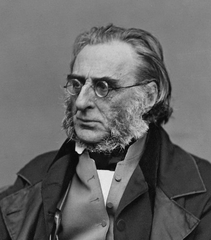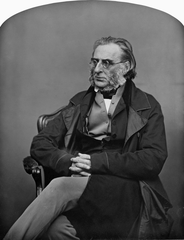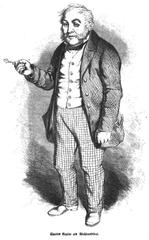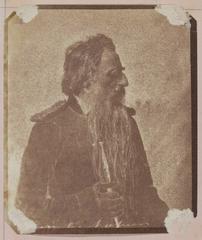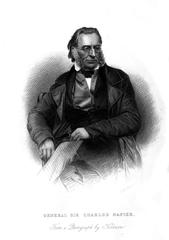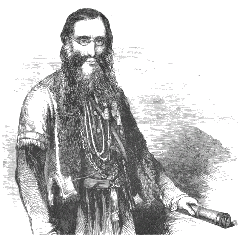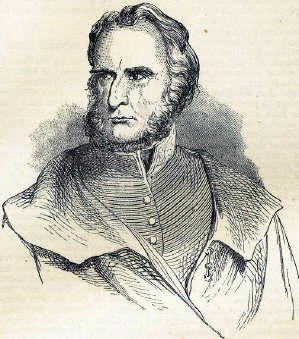
Statue of Charles James Napier: Visiting Hours, Tickets, and Visitor Guide in London
Date: 14/06/2025
Introduction
The statue of General Sir Charles James Napier stands on the southwest plinth of London’s Trafalgar Square, offering a compelling window into Victorian military history and Britain’s imperial legacy. Erected in 1856 and sculpted by George Gammon Adams, the bronze monument commemorates Napier’s extensive military career, notably his conquest of Sindh in 1843, which marked a major expansion of British rule in the Indian subcontinent (Walks.com – Trafalgar Square History). Trafalgar Square’s open, central location makes this monument accessible to all, while inviting reflection on its complex legacy in the 21st century (London x London).
This guide provides a comprehensive overview—covering the statue’s history, artistic and cultural significance, practical visitor information, and the ongoing debates surrounding public monuments. Whether you’re a history enthusiast, a cultural explorer, or a casual tourist, this article will help you make the most of your visit to the Charles James Napier statue.
Table of Contents
- Who Was Charles James Napier?
- The Statue: History and Artistic Details
- Visiting Information
- Cultural and Historical Context
- Controversies and Criticism
- Conservation and Heritage Status
- Nearby Attractions
- Visitor FAQs
- Tips for an Enriched Visit
- Conclusion and Further Resources
Who Was Charles James Napier?
Charles James Napier (1782–1853) was a distinguished British Army general renowned for his roles in the Peninsular War, the War of 1812, and, most notably, the 1843 annexation of Sindh (now in Pakistan). His military service spanned more than 50 years, with assignments in Ireland, the Mediterranean, and India. Napier’s actions, especially in Sindh, made him a controversial figure—viewed by some as a reformer and by others as an agent of colonial oppression (BitAboutBritain.com – Charles James Napier).
The Statue: History and Artistic Details
Commissioned by public subscription, including contributions from private soldiers, the statue was sculpted by George Gammon Adams and unveiled in 1856 (London Remembers). The bronze figure, standing approximately 12 feet tall atop a granite pedestal, depicts Napier in full military uniform, bareheaded, with a cloak draped over his shoulders. In one hand, he holds a scroll—symbolizing his role as Governor of Sindh and his administrative reforms; his hand resting on the hilt of a sword underscores his military authority (Everything Explained Today). The neoclassical style reflects Victorian ideals of heroism and virtue.
The statue occupies the southwest plinth, alongside monuments to Major General Sir Henry Havelock and King George IV. The fourth plinth is reserved for contemporary art installations, making the square a dynamic space where historical and modern artistic expressions coexist (Fourth Plinth Project).
Visiting Information
Location and Hours
- Address: Southwest corner of Trafalgar Square, London, WC2N
- Hours: Open 24/7. Trafalgar Square is a public space; the statue is viewable at all times.
- Tickets: No ticket or entry fee is required.
Accessibility
Trafalgar Square and the statue area are fully wheelchair accessible, with step-free access, paved pathways, and nearby accessible toilets. The square is designed for ease of movement for all visitors.
Getting There
- Nearest Underground Stations: Charing Cross (Bakerloo, Northern lines), Leicester Square, Embankment (Circle, District lines)
- Bus Routes: 6, 9, 11, 15, 23, 87, 91, 139, 176 (TfL Bus Maps)
- Travel Tips: The area is pedestrian-friendly and well-lit with regular security patrols.
Best Times to Visit
- Early mornings or late afternoons provide optimal lighting and fewer crowds—ideal for photography and a peaceful experience.
- Special Events: Trafalgar Square hosts regular cultural events, demonstrations, and seasonal festivals. Check the official events calendar for up-to-date information.
Cultural and Historical Context
Trafalgar Square is a powerful symbol of British history, designed by John Nash and officially opened in 1844 (Historic England). The square commemorates national victories and military achievements, with its statues and monuments reflecting the values of the Victorian era. Napier’s statue, once a celebrated tribute to imperial expansion, now sparks debate about colonial history, public memory, and the evolving significance of public art (London x London).
Controversies and Criticism
Artistic Critique
From the outset, Napier’s statue was criticized for its artistic quality—the 1862 Art Journal called it “perhaps the worst piece of sculpture in England” (Inspiring City). Despite this, the monument remains unaltered and is an enduring part of Trafalgar Square’s landscape.
Colonial Legacy and Calls for Removal
Napier’s role in the annexation of Sindh is controversial, prompting modern reassessment. In 1936, proposals to replace his statue (and Havelock’s) with those of WWI admirals were never implemented. More recently, in 2000, then-Mayor Ken Livingstone suggested their removal due to declining public recognition (Wikipedia). These debates mirror wider conversations about the decolonization of public spaces.
Public Engagement
Many visitors are unaware of Napier’s identity or the statue’s significance, leading to calls for improved interpretation via plaques or digital guides (Inspiring City).
Conservation and Heritage Status
- Listed Status: The statue has been Grade II listed since 1970, which protects it as a structure of special historical and architectural interest (Wikipedia).
- Maintenance: The City of Westminster and English Heritage perform regular cleaning and conservation.
- Urban Development: The square underwent major pedestrianization and accessibility improvements between 1996 and 2003 (Explorial).
Nearby Attractions
- Nelson’s Column: Iconic monument at the square’s center, flanked by four bronze lions.
- National Gallery: World-class art collections, located on the square’s north side.
- St Martin-in-the-Fields: Historic church known for music and architecture.
- Major General Sir Henry Havelock Statue: Another figure of Victorian military history.
Visitor FAQs
Q: What are the visiting hours for the Napier statue?
A: Trafalgar Square is open 24/7; the statue is accessible at all times.
Q: Is there an admission fee?
A: No, both the square and the statue are free to access.
Q: Is the site wheelchair accessible?
A: Yes, the square and statue area are fully accessible.
Q: Are guided tours available?
A: Yes, several companies offer guided walking tours. Audio guides and apps like Audiala provide self-guided options.
Q: Can I take photos?
A: Yes, photography is encouraged.
Q: Are drones permitted?
A: Drone use requires prior authorization from the City of Westminster (Westminster Drone Policy).
Tips for an Enriched Visit
- Photography: Capture the statue with Nelson’s Column or the National Gallery in the background, particularly at golden hour.
- Combine Attractions: Plan to visit the National Gallery or nearby cafés for a fuller experience.
- Use Digital Guides: Enhance your visit with apps like Audiala for interactive maps and historical context.
- Check Events: Review the Trafalgar Square events calendar in advance to avoid crowds or restricted access.
- Respect the Site: Climbing on statues is prohibited; use litter bins and respect event space boundaries.
Conclusion
The Charles James Napier statue stands as a testament to Victorian Britain’s military achievements and imperial ambitions, but also as a focal point for dialogue about colonial history and the evolving meaning of public monuments. It offers free, round-the-clock access at the heart of one of London’s most vibrant spaces, surrounded by cultural landmarks and accessible to all.
To deepen your experience, consider guided tours, digital resources, and thoughtful engagement with the statue’s history and the broader context of Trafalgar Square. As you stand before Napier’s likeness, you’re invited not only to reflect on the past, but also to participate in ongoing conversations about history’s place in public life.
References and Further Reading
- Walks.com – Trafalgar Square History
- BitAboutBritain.com – Charles James Napier
- Wikipedia. Statue of Charles James Napier, Trafalgar Square
- London x London. Trafalgar Square London
- Inspiring City. The Statues of Trafalgar Square in London
- London Remembers. Sir Charles Napier Statue
- Everything Explained Today. Statue of Charles James Napier
- Fourth Plinth Project
- Historic England
- Explorial
- TfL Bus Maps
- Westminster Drone Policy
- Audiala App

